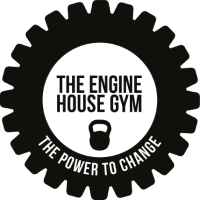Functional Movement Screens.
What is a Functional Movement Screen?
A functional movement screen helps us figure out how well you move. It doesn’t diagnose a specific problem but does help us find out where we can improve your movement so your training can be optimised for you and put preventative measures in to reduce the risk of future injuries.
What’s involved?
We look at your muscle flexibility and try to identify imbalances and asymmetries in strength and movement or any compensations you may be making due to previous injuries. We’ll also evaluate your physical stability and mobility.
The movement screen will look at 7 movement patterns that require mobility and stability to perform:
- Overhead Deep Squat
Perform a squat whilst holding a dowel above your head. We look at the depth of the squat, whether the arms stay above the head and if knees fall inwards or outwards when squatting. Is the chest and head position correct? Assesses bilateral, symmetrical and functional mobility of hips, knees and ankles as well as mobility of shoulders and thoracic spine. - Hurdle Step
Step over a hurdle and touch the other side with your heel. Designed to challenge the body’s stride mechanics, stability of ankle, knee and hip. - In-line Lunge
Standing on a plank and performing a standard lunge whilst holding a dowel between your shoulders. Demostrates ability to resist rotation and maintain proper alignment. - Active Straight Leg Raise
Laying on the floor with arms flat and to the side and then raising a leg into the air whilst the other leg remains in contact with the floor. Assesses hamstring activity as well as gastroc-soleus flexibility and hip mobility. - Trunk Stability Push Up
Looking at the back position (any rounding of the lower back), where does the head position (in between hands or not). Establishes ability to stabilise the spine during upper body movements. - Rotary Stability
Kneeling on all fours and raising opposing same/opposing arm and leg at the same time. Evaluates asymmetric truck stability in multiple planes during asymmetric upper and lower extremity movements. - Shoulder Mobility
Reaching your arms around your back with the aim to touch your shoulder blade. Assess your bilateral shoulder range of motion, scapular and thoracic spine mobility.
Each pattern is then scored 0-3, where 0 = pain, 1 = can not perform the movement pattern, 2 = can perform pattern but with poor mechanics or compensation and 3 = no compensations to perform pattern correctly.
What are the benefits?
- Can help with recurring sports injuries
- Evaluate why strength and flexibity issues aren’t improving even with training
- Identify potential day to day activies (eg. work set up) that are causing aches and pains
- Evaluate performance deficients following an injury
Get 2 weeks free!
Sitting on the fence about signing up? We get it - we wouldn't want to buy before we try either! That's why we offer a 2 week free trial so you can come along and see what we're all about.
